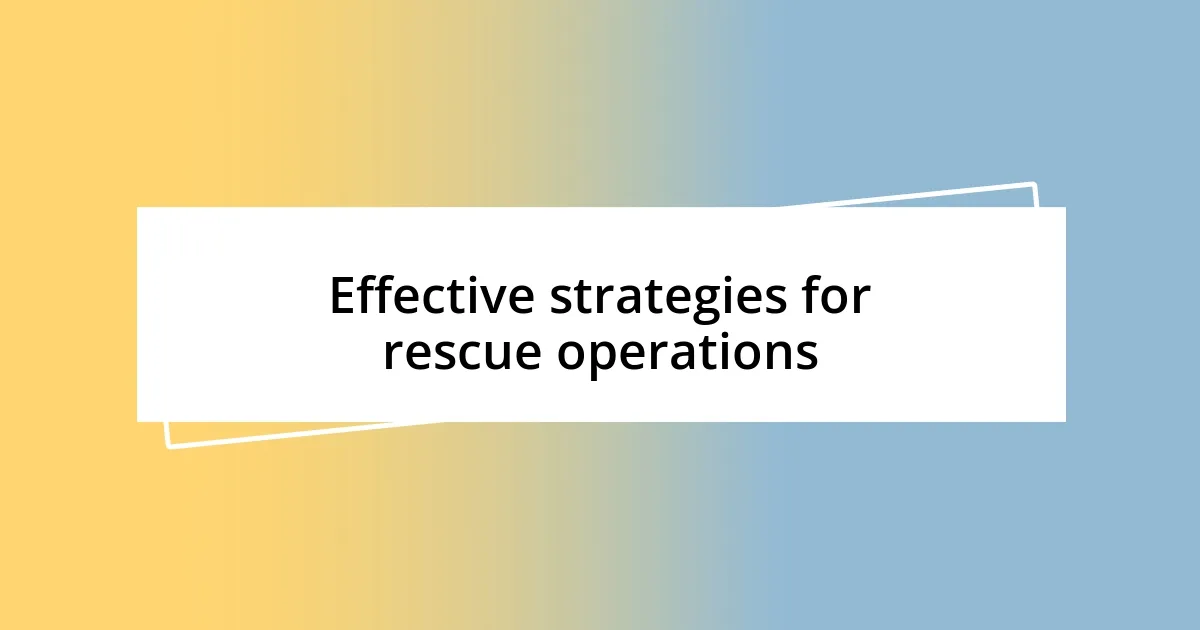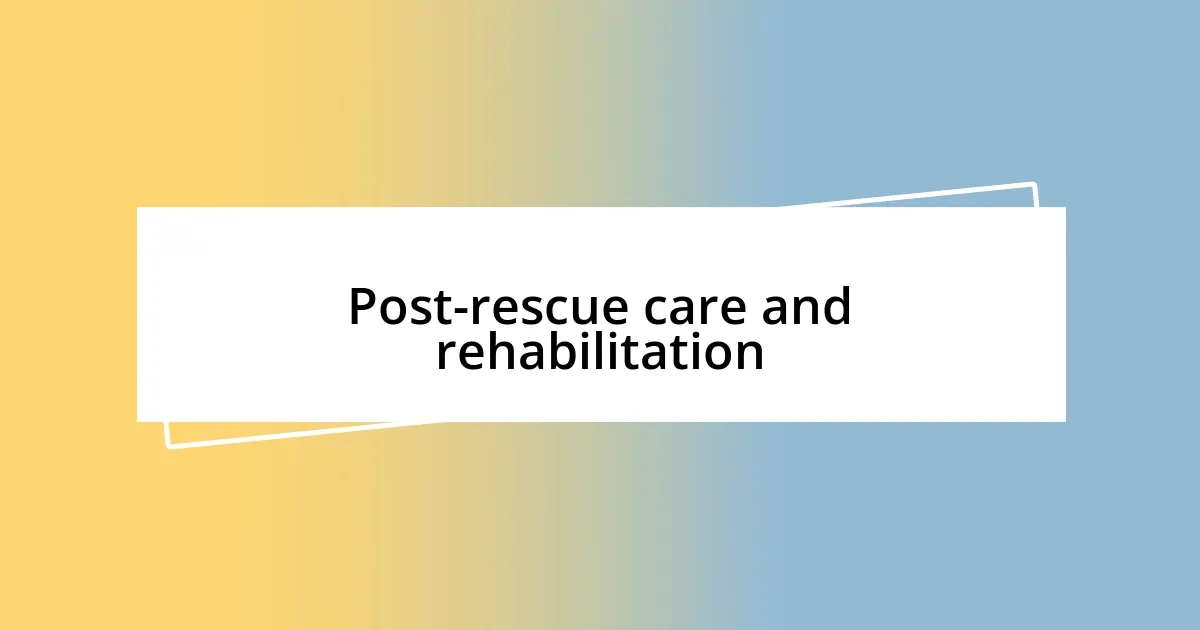Key takeaways:
- Limited resources and logistics are major challenges in animal rescue, impacting the ability to save lives effectively.
- Building a well-trained team and planning logistics in advance are crucial for successful rescue operations.
- Post-rescue care, including medical treatment and socialization, is essential for the recovery and rehabilitation of rescued animals.
- Public education and community relationships enhance the effectiveness of rescue efforts and encourage more people to seek help for animals in need.

Key challenges in animal rescue
One of the most significant challenges in animal rescue is the limited resources available—both financial and human. I remember a specific instance when our team was stretched thin, responding to an emergency call about a litter of puppies abandoned in a remote area. It really made me question how many more lives we could save if we had just a few more volunteers or a bit more funding.
Logistics can also pose a major hurdle. While trying to organize a transport for a critically injured cat, I found myself wrestling with the coordinates of the vet and the availability of a suitable vehicle. Isn’t it frustrating how a simple rescue can hinge on so many moving parts? It drives home the point that even with the best intentions, the execution can fall apart without careful planning.
Additionally, I’ve seen firsthand how public perception can complicate rescue operations. Once, I encountered an individual who was reluctant to report an injured animal, fearing the implications of legal action. This experience reinforced for me the importance of educating the public about responsible animal care and the true purpose of rescue organizations. Isn’t it crucial to create an environment where people feel empowered to seek help for animals in need?

Effective strategies for rescue operations
When it comes to executing effective rescue operations, quick decision-making is paramount. I recall a situation when we received an urgent call about a dog trapped in a storm drain. Within minutes, we had to gather our team, formulate a strategy, and rush to the scene. It was a race against time that reinforced the need for clear communication and rapid action.
Here are some effective strategies I’ve found invaluable in the field:
- Establish a well-trained team: Having skilled volunteers trained in animal handling and first aid can make all the difference.
- Plan logistics in advance: Organizing transportation and medical care beforehand streamlines the rescue process and reduces stress.
- Build community relationships: Collaborating with local authorities and animal welfare organizations fosters trust and support.
- Utilize social media: Spreading the word about rescues can gather volunteers quickly and expand the network of support.
- Conduct regular drills: Practicing rescue scenarios with your team ensures everyone knows their role during emergencies.
In my experience, the cohesion of these strategies can significantly enhance the outcome of rescue missions, ultimately saving more lives.

Post-rescue care and rehabilitation
Post-rescue care is crucial for an animal’s recovery and reintegration into a safe environment. I once took in a timid cat after a rescue, and it broke my heart to see her so scared and withdrawn. I learned that providing a calm space, along with gentle handling, helped her gradually regain her trust in humans. Isn’t it fascinating how patience can forge such deep connections?
Rehabilitation often involves medical treatment and behavior training tailored to each animal’s needs. There was a time when I worked with a dog who had suffered from severe malnutrition and parasites. The transformation was incredible: through consistent vet visits, a nutritional plan, and positive reinforcement training, he blossomed into a happy, playful companion. It made me realize how vital it is to cater to both their physical and emotional well-being during recovery.
Moreover, socializing rescued animals can play a significant role in their rehabilitation. I remember introducing a group of kittens to a stable environment filled with gentle sounds and friendly faces. Watching them become more playful and curious warmed my heart. It begs the question—how much do our actions truly impact their journey to trust and happiness? Every step in post-rescue care counts, and seeing their growth brings a profound sense of fulfillment.












